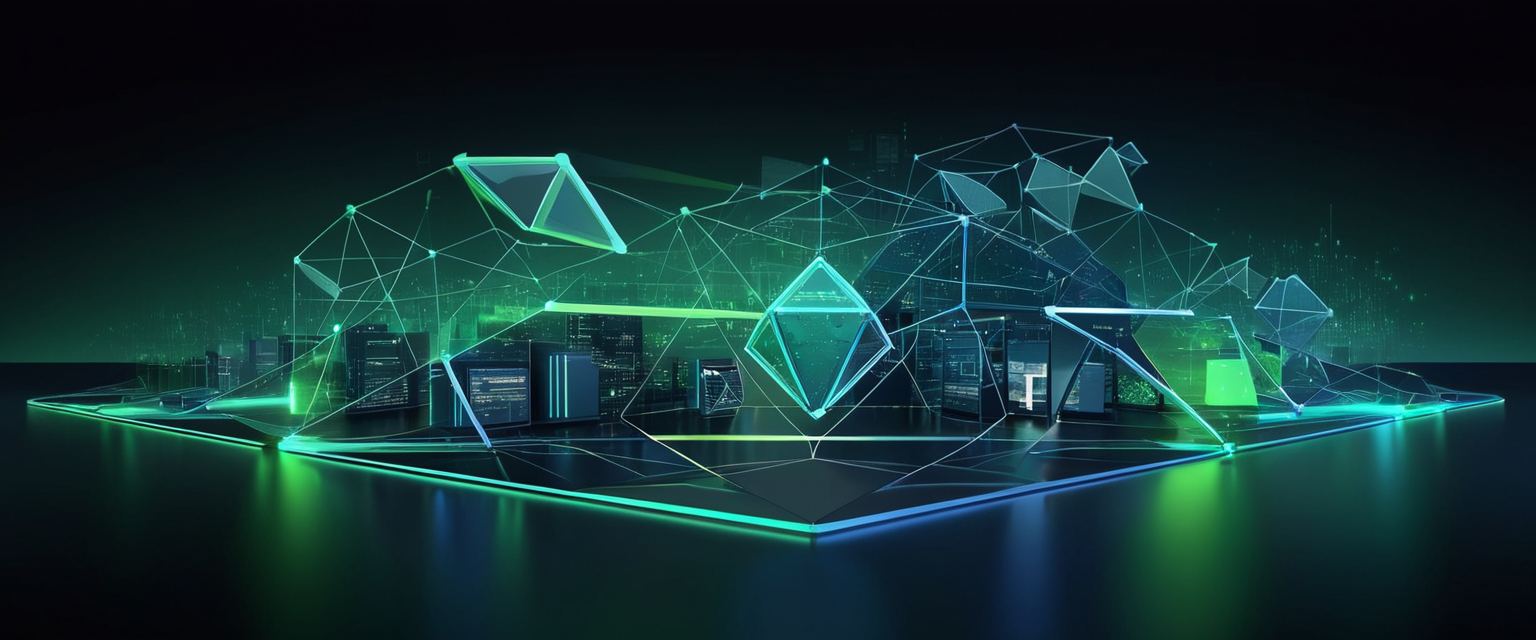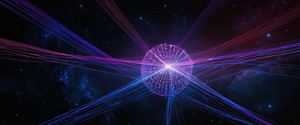
The dark web presents a stark visual departure from the aesthetically refined and feature-rich websites that populate the mainstream internet, creating an alternative digital landscape defined by minimalism, functionality, and deliberate obscurity. While most internet users encounter polished, image-heavy, and algorithmically optimized web interfaces designed to maximize engagement and commercial conversion, the hidden corners of the Tor network instead feature text-dominated pages reminiscent of the early internet era, stripped of elaborate graphics, tracking mechanisms, and identifying branding elements. This fundamental visual distinction reflects not merely a choice in design philosophy but rather emerges directly from the technical and security imperatives that govern dark web operations, where anonymity takes absolute precedence over aesthetic appeal, and where every design decision must account for the threat of surveillance, law enforcement infiltration, and cyber attacks that lurk behind every .onion domain.
The Architecture of Internet Layers and Positioning of the Dark Web
To properly understand what the dark web looks like requires first situating it within the broader architectural framework of internet geography. The internet is commonly divided into three distinct layers that differ fundamentally in their accessibility, searchability, and content characteristics. The surface web, also known as the clearnet or open web, constitutes the most visible and accessible portion of the internet, making up only approximately five to ten percent of total internet content. This surface layer encompasses all websites that users can readily discover through standard search engines like Google, Bing, or Yahoo, accessed through conventional web browsers such as Chrome, Firefox, Safari, and Edge. These sites feature standard domain extensions including .com, .net, .org, .edu, and .gov, and their content is actively indexed by search engine crawlers that continuously catalog and organize information for rapid retrieval.
Beneath this visible surface lies the deep web, which comprises an estimated ninety to ninety-five percent of all internet content and represents all web pages and data not indexed by traditional search engines. The deep web includes legitimate, perfectly legal repositories of information such as password-protected email inboxes, online banking systems, personal health records, academic databases, corporate intranets, subscription-based content libraries, and government databases accessible only to authorized users. Most internet users interact with the deep web multiple times daily without realizing it—checking email, reviewing bank statements, streaming subscription content, or accessing educational materials all occur within deep web spaces protected by authentication barriers rather than technical obscurity. The deep web is fundamentally different from the dark web in that it is not deliberately hidden or designed for anonymity; rather, it simply exists behind access controls that prevent casual discovery while remaining entirely legal and above-board.
Within the deep web, nested like a Russian matryoshka doll, exists the dark web, which occupies an incredibly small fraction—estimated at approximately 0.01 percent—of the deep web itself. Unlike the deep web, which is merely private and access-restricted, the dark web is deliberately hidden, actively obscured from traditional search engines, and requires specialized software tools to access. This intentional obscuration creates the visual and structural characteristics that define dark web appearance, as the designers and operators of hidden services must employ techniques that simultaneously protect their anonymity while remaining functional enough to serve their intended users.
Technical Infrastructure and Domain Nomenclature
The visual environment of the dark web is immediately recognizable through its unique domain structure and naming conventions, which serve both functional and security purposes. Most dark web sites display URLs ending in the special-use top-level domain .onion rather than the familiar .com, .net, .org, or .edu suffixes. The .onion domain is not a conventional DNS name registered through traditional domain registrars; rather, it is a special addressing scheme that functions exclusively within the Tor network, representing cryptographic identifiers derived from public keys rather than traditional domain name system entries. These .onion addresses typically appear as seemingly random alphanumeric strings, often between sixteen and fifty-six characters long, creating addresses like the infamous “eajwlvm3z2lcca76.onion” that once served as the gateway to the Dream Market. Critically, these addresses are virtually impossible for casual users to remember or type accurately, bearing no semantic relationship to the actual services they host.
The cryptographic basis of .onion addressing reflects the fundamental security architecture that shapes the entire visual appearance of dark web infrastructure. Rather than being arbitrarily chosen by administrators, these domain names are automatically generated based on public cryptographic keys when an onion service is configured. Originally, the Tor Project implemented sixteen-character version 2 onion addresses, but these were deprecated and replaced with fifty-six-character version 3 addresses in October 2021 to provide enhanced security features and protections against computational attacks. The technical requirement that these addresses must be derived from cryptographic material means that dark web site operators cannot craft human-readable domain names through traditional marketing or branding efforts; instead, they must either accept randomly generated addresses or engage in the computationally intensive process of generating massive numbers of key pairs until a sufficiently desirable URL pattern emerges. This technical constraint fundamentally shapes the information landscape users encounter, as it means that discovering dark web sites requires foreknowledge of their addresses or discovery through directories and forums that compile and distribute these unwieldy alphanumeric identifiers.
The Minimalist Aesthetic and Functional Design Philosophy
The most striking visual characteristic of dark web websites is their deliberate rejection of modern web design conventions in favor of stark, text-heavy, minimalist layouts that often appear decades out of date compared to contemporary web standards. Dark web sites typically employ simple HTML structures with minimal graphical elements, often using monospaced fonts like Courier New that would have been standard in the 1990s but have been abandoned by mainstream websites that prioritize visual hierarchy, brand recognition, and aesthetic sophistication. Many dark web pages consist primarily of blocks of unformatted text with little to no embedded imagery, creating visual experiences that resemble command-line interfaces or early internet bulletin board systems rather than modern, algorithmically-optimized user interfaces. When images do appear on dark web sites, they frequently display at low resolution and appear deliberately pixelated or degraded, suggesting that visual content is included only when functionally necessary rather than as aesthetic choice.
This minimalist design approach is not indicative of incompetence or technical limitation on the part of dark web developers, but rather represents a deliberate and strategic choice grounded in security and operational security principles. The technical rationale underlying this aesthetic centers on the understanding that every graphical element, every external resource loaded from a server, every complex JavaScript function, and every elaborate CSS style sheet increases the attack surface and creates additional opportunities for compromised sites to leak identifying information about users or operators. Large images and multimedia content load slowly, potentially revealing information through network timing attacks that correlate download patterns with specific users. Complex graphical elements and intricate layouts require more sophisticated rendering, increasing the likelihood of JavaScript exploitation that could compromise user anonymity. Even seemingly innocuous design features like custom fonts or external resources can enable device fingerprinting attacks that allow observers to identify individual users based on unique combinations of browser capabilities and cached resources.
Furthermore, the dark web’s focus on anonymity and security creates an environment where site operators deliberately minimize distinctive visual branding elements that could expose identifying information about the site’s administrators. Logos, color schemes, distinctive typography, and unique design patterns all represent potential identifiers that could be recognized by law enforcement or rival cybercriminal groups. Even seemingly innocuous design choices, such as the specific layout of information or the particular wording of status messages, can accumulate into unique fingerprints that link different .onion addresses to the same operator. By maintaining visual anonymity through generic, text-based layouts, dark web site operators reduce the likelihood that their sites can be uniquely identified or linked to specific threat actors through comparative design analysis. This represents a sharp departure from the surface web, where distinctive branding is an essential asset and site operators invest substantial resources into creating memorable, recognizable visual identities.
Comparison Between Dark Web and Surface Web Visual Presentation
The contrast between dark web aesthetics and mainstream internet design reflects fundamentally different priorities and design constraints. Surface web sites prioritize visual appeal, brand recognition, and user engagement, employing elaborate color schemes, high-resolution imagery, animated graphics, video content, and sophisticated CSS styling to create immersive digital experiences that encourage extended engagement and repeated visits. These sites employ professional designers, digital marketing specialists, and user experience experts to optimize every visual element for conversion, engagement, and brand reinforcement. The surface web aesthetic reflects the commercial imperative of e-commerce, content platforms, and social media sites that generate revenue through advertising, subscriptions, or the sale of user data, making visual appeal and user retention metrics central to business success.
In stark contrast, dark web sites often appear intentionally austere and utilitarian, displaying lengthy blocks of unformatted text with minimal visual hierarchy and no aesthetic embellishment. Many dark web marketplaces and forums feature layouts that mirror the design of academic databases or technical documentation rather than consumer-facing commercial sites. Information is presented in simple tables or lists, with hyperlinks rendered in default colors and styles rather than elaborately designed call-to-action buttons. This austere approach often extends even to sites whose operators might theoretically benefit from improved design and user experience optimization; drug marketplace administrators and hacking forum operators, despite conducting transactions valued in millions of dollars, typically operate sites with visual presentations that would appear deliberately neglected if encountered on the surface web.
The difference in design philosophy extends beyond mere aesthetics to encompass fundamental questions about user interface design principles and the role of design in online communities. Surface web design philosophy emphasizes reducing friction in user interactions, lowering barriers to entry, and creating intuitive interfaces that maximize user engagement and minimize abandonment. Dark web design philosophy, by contrast, explicitly embraces higher barriers to entry and deliberately unfriendly interfaces that serve as natural filtering mechanisms to discourage casual exploration and law enforcement surveillance. A confusing interface that appears outdated and difficult to navigate serves the security interests of dark web operators by discouraging automated surveillance tools, law enforcement investigation, and casual browsing by inexperienced users who might make mistakes and expose sensitive information.
Security Implications of Minimal Design
The security rationale underlying dark web visual minimalism operates on multiple levels, each reflecting specific threat models and operational security considerations. First, the absence of external resources and the reliance on simple HTML reduces attack surface at the technical level. Modern web browsers support an increasingly complex array of technologies including JavaScript, WebAssembly, Flash, Java plugins, and various media formats, any of which could potentially contain vulnerabilities that attackers could exploit to compromise user anonymity or gain access to system information. By restricting sites to basic HTML with minimal embedded resources, dark web site designers significantly reduce the likelihood that exploitation of browser vulnerabilities could leak identifying information or compromise user systems.
Second, the absence of tracking mechanisms and the elimination of complex style sheets and fonts reduces the ability of observers to identify and fingerprint individual users. Modern surface web sites employ sophisticated tracking technologies including cookies, local storage, session identifiers, and device fingerprinting techniques that allow advertising networks and analytics platforms to track users across multiple sites and sessions. These tracking mechanisms invariably leak identifying information through network traffic that observers, including government agencies and cybercriminals, can monitor and analyze. By eliminating these tracking mechanisms and employing generic, unidentifiable design elements, dark web sites prevent the accumulation of trackable behavioral patterns that could be used to identify individual users.
Third, the simplicity of dark web site design reduces the likelihood of information leakage through timing attacks and side-channel analysis. Complex rendering engines and elaborate CSS parsing can produce subtle variations in page load times and network traffic patterns that correlate with specific user behaviors and preferences. These timing variations can be measured and analyzed by network observers to infer user activities and site preferences even when the actual content transmitted is encrypted. Simple HTML pages that render identically regardless of which specific content sections a user accesses eliminate these timing-based information leakage channels.
User Interface Patterns and Navigation Structures
Despite the minimalist aesthetic that characterizes most dark web sites, successful platforms have developed sophisticated user interface patterns and navigation structures that facilitate user interactions despite the deliberate rejection of modern design conventions. Dark web marketplaces, in particular, have evolved recognizable interface patterns including product listings displayed in tabular format, user reputation systems presented as numerical scores, search functionality implemented through simple text input fields, and administrative functions organized in hierarchical menu structures. These interface patterns recall the e-commerce sites of the 1990s, such as early eBay or Amazon interfaces, which similarly relied on simple text-based layouts before modern web technologies enabled the sophisticated visual designs that now characterize mainstream commercial sites.
Many major dark web marketplaces organize content into category hierarchies presented through simple hyperlinked menus, allowing users to browse product categories such as “drugs,” “counterfeit goods,” “services,” or “hacking tools”. Within each category, individual listings typically display critical information including product name or description, price in cryptocurrency, vendor username or identifier, seller reputation score, and possibly a thumbnail image or textual description. This presentation format is functionally equivalent to surface web marketplaces, but executed with minimal visual embellishment—prices appear in plain text rather than being highlighted in large colorful fonts, vendor reputation scores appear as simple numerical values rather than graphical star ratings, and product images, when present, typically display at small size and low resolution.
Dark web forums employ similarly utilitarian interface patterns, organizing discussions into topic categories and sub-categories presented through hierarchical lists. Individual forum threads display usernames, post timestamps, post content, and user reputation metrics in simple tabular layouts that resemble academic bulletin boards or technical mailing list archives more closely than they resemble the elaborate threaded discussion interfaces implemented on modern social media platforms. Notable dark web forums such as Dread, which explicitly mimics the interface of Reddit’s discussion aggregation platform, represent an evolution in dark web user interface design that incorporates somewhat more modern interface patterns while still maintaining the fundamental minimalist aesthetic. Similarly, some dark web marketplaces have implemented increasingly sophisticated features including automated escrow systems, reputation algorithms, dispute resolution mechanisms, and user interface improvements that somewhat modernize the visual presentation while preserving the core principle of functional minimalism.

The Role of Escrow Systems and Transaction Interfaces
The visual presentation of escrow systems and transaction mechanisms on dark web marketplaces illustrates how functional requirements shape user interface design even within the minimalist aesthetic framework. Dark web escrow systems, which hold cryptocurrency or verify product delivery before completing transactions between buyers and sellers, typically feature simple interfaces for initiating transactions, submitting disputes, and confirming delivery. These interfaces often present users with basic forms requesting essential information such as transaction amounts, delivery confirmations, or dispute justifications, displayed through simple text input fields and submission buttons rather than elaborate multi-step wizards or graphically sophisticated interfaces. The visual simplicity of these critical financial interfaces reflects both security imperatives and the understanding that dark web users prioritize functionality and reliability over aesthetic appeal.
Some more sophisticated dark web marketplaces have implemented increasingly automated escrow systems that reduce the need for human intermediaries, presenting visual interfaces that display transaction status through simple text indicators or basic status tables. The Verified forum, for example, introduced automated escrow features that allowed users to confirm transactions and initiate refunds through single-click buttons rather than requiring extensive back-and-forth communication with human guarantors. These interface improvements represent a clear evolution in dark web user experience design, yet still employ fundamentally minimalist visual presentations that prioritize functionality and security over aesthetic sophistication. The visual presentation of these increasingly complex marketplace features within the constraint of minimalist design demonstrates that dark web interface designers have successfully balanced the competing demands of user experience optimization and operational security.
Accessibility and Search Engine Limitations
The visual landscape of the dark web is also fundamentally shaped by the absence of traditional search engine indexing and the resulting implications for site discovery and navigation. Since dark web sites are deliberately not indexed by conventional search engines and do not appear in results from Google, Bing, or other mainstream search platforms, users cannot rely on search-driven discovery to locate specific sites. Instead, dark web users typically navigate through direct knowledge of site URLs, recommendations from other users in forums or messaging platforms, or through specialized dark web search engines and directory sites like Ahmia, NotEvil, or the Hidden Wiki that compile curated lists of known .onion services.
This fundamental difference in discoverability mechanisms shapes the visual presentation of dark web sites in subtle but important ways. Because sites cannot rely on algorithmic search visibility to drive user discovery, they do not employ the search engine optimization (SEO) techniques that drive design decisions on the surface web. Surface web sites employ countless design choices specifically intended to improve search engine visibility and ranking, including keyword optimization, internal linking structures, meta tags, and structured data markup—all of which contribute to elaborate and often visually cluttered presentations designed to signal relevance to search algorithms. Dark web sites, operating outside the search engine economy, have no incentive to implement these design choices and can instead focus purely on functionality and user utility for their intended audience.
The absence of algorithmic search indexing also contributes to the development of specialized dark web directory services and search engines that maintain manually curated or actively crawled indexes of .onion sites. These specialized search platforms typically display search results in minimal interfaces presenting .onion URLs alongside brief descriptive text, continuing the minimalist aesthetic rather than implementing the elaborate result presentation formats employed by mainstream search engines. The Hidden Wiki, a dark web directory service, presents information in simple wiki format with plain text descriptions and unadorned hyperlinks, mirroring the aesthetic of its namesake Wikipedia but maintaining the minimalist visual presentation characteristic of dark web services.
Marketplace and Forum-Specific Design Characteristics
Different categories of dark web services have developed recognizable visual patterns and interface conventions specific to their functional requirements. Dark web drug marketplaces, for instance, typically organize products into category hierarchies including substance type, purity level, and package size, with pricing displayed in Bitcoin or other cryptocurrencies. Individual product listings typically present vendor information, shipping origins, estimated delivery times, customer reviews, and quantity available, all organized in simple table or list formats that provide essential information while maintaining minimal visual overhead. The visual presentation of marketplace product information thus mirrors the structure of surface web marketplaces like eBay or Amazon, but executed with substantially reduced visual sophistication and dramatically fewer decorative elements.
Hacking forums and cybercriminal discussion communities display somewhat different interface patterns reflecting their focus on technical discussion and resource sharing rather than commerce. These forums typically organize discussions into topic categories such as “malware development,” “vulnerability trading,” “initial access sales,” “hacking tutorials,” and “general discussion,” with individual threads displaying usernames, post timestamps, reputation metrics, and post content in simple hierarchical structures. Advanced users or administrators often receive visual recognition through user badges or titles displayed next to their usernames, and their posts may be highlighted through simple HTML formatting rather than elaborate visual styling. Reputation systems, critical for establishing trust in environments built on anonymity, typically display user reputation scores as simple numerical values or textual reputation levels such as “trusted,” “verified,” or “unverified” rather than through graphical representations.
Data leak forums and breach notification platforms display characteristic visual patterns organized around the presentation of stolen datasets and compromised information. These platforms typically present leaked information through simple table interfaces displaying dataset names, leak dates, victim organizations, data type descriptions, and download links or preview information, all organized in text-based tabular layouts. Some more sophisticated platforms have implemented search and filtering capabilities that allow users to search across leaked datasets for specific information or organizational identifiers, yet these search interfaces maintain the minimalist aesthetic through simple text input fields rather than elaborate graphical interfaces. The aesthetic of data leak platforms reflects the urgent, functional nature of the information being presented—users accessing these platforms are focused on locating specific compromised data quickly and reliably rather than enjoying an aesthetically sophisticated user experience.
Historical Evolution and Contemporary Developments
The visual presentation of dark web sites has evolved gradually since the Tor network’s early days and the emergence of the first crude dark web marketplaces in the early 2010s, yet the fundamental minimalist aesthetic has remained largely consistent. The earliest dark web marketplaces, such as Silk Road which operated from 2011 to 2013, represented a significant technical and organizational achievement in creating functional marketplace infrastructure on the dark web, yet employed visual interfaces that appeared primitive even by contemporary standards. These early platforms consisted primarily of basic HTML pages organizing product listings into simple category hierarchies, with vendor reputation systems displayed through numerical scores and customer reviews presented in plain text.
As the dark web ecosystem matured and subsequent marketplace platforms emerged, including AlphaBay, Dream Market, Wall Street Market, and ultimately Hydra, developers gradually incorporated more sophisticated interface features while maintaining the core minimalist aesthetic. These later platforms introduced improvements including more robust search functionality, more sophisticated user reputation algorithms, improved dispute resolution systems, and somewhat modernized visual presentations that incorporated basic graphical elements like simplified icons or status indicators. However, even these evolutionary improvements remained constrained by the fundamental security and anonymity imperatives that govern dark web site design.
Contemporary dark web forums and marketplaces represent the current state of this evolutionary process, with platforms like Dread demonstrating increased sophistication in user interface design while still adhering to minimalist principles. Dread, established in 2018 and currently receiving hundreds of posts daily, explicitly mimics the visual layout and interface patterns of Reddit, employing subreddits-style topic organization and a somewhat more modern interface than earlier dark web forum platforms. Yet even Dread maintains the fundamental dark web aesthetic—text-heavy presentation, minimal graphics, absence of elaborate styling, and functional organization focused on information delivery rather than aesthetic appeal. This represents an evolution in dark web interface design that acknowledges that some users prefer more intuitive, modern-appearing interfaces while still maintaining the security and anonymity imperatives that constrain all dark web services.
Technical Elements and Code-Level Considerations
At the technical level, the visual minimalism of dark web sites reflects deliberate choices in HTML markup, CSS styling, and the avoidance of JavaScript and complex rendering operations that could leak information or create exploitation vectors. Many dark web sites consist of static HTML pages with no CSS styling whatsoever, presenting information in the browser’s default presentation without any customization of colors, fonts, spacing, or layout. This approach ensures consistent presentation across all browsers and operating systems while minimizing the risk that CSS parsing or rendering quirks could create identifiable characteristics that allow observer to link multiple visits to specific users.
When dark web sites do employ CSS styling, it typically involves minimal, utilitarian styles focused on basic readability rather than aesthetic appeal. Monospaced fonts like Courier New are commonly employed specifically because they do not reveal identifying information about the user’s system configuration or available fonts, unlike variable-width fonts that might reveal font availability information through subtle rendering differences. Simple background colors such as black text on white backgrounds or white text on dark gray backgrounds are preferred over elaborate color schemes that might create identifying visual signatures. Link colors typically remain in default blue and purple presentations rather than being customized to site-specific color schemes that could serve as identifying characteristics.
The absence of JavaScript on most dark web sites represents a particularly deliberate security choice, as JavaScript execution creates numerous opportunities for information leakage and exploitation. Even well-intentioned JavaScript code can leak information about browser capabilities, installed plugins, and system configuration through various timing attacks and side-channel analysis techniques. Malicious JavaScript injected by attackers or by compromised hosting infrastructure can directly compromise user anonymity by executing code with access to browser history, cookies, and local storage data. Consequently, many dark web sites deliberately disable all JavaScript and rely exclusively on server-side processing, ensuring that user interactions are processed entirely on the server without any client-side code execution that could create vulnerabilities. More sophisticated dark web sites may include carefully vetted JavaScript for specific functions, but such implementations are implemented with extreme caution and typically include multiple layers of security hardening to prevent exploitation vectors.
Comparison with Modern Design Trends and User Experience Principles
The stark visual departure of dark web sites from contemporary web design trends reflects a fundamental inversion of priorities regarding the purpose of visual design and the definition of “good” user experience. Modern surface web design philosophy, informed by decades of research in user experience design and conversion optimization, emphasizes reducing cognitive load, minimizing friction, lowering barriers to entry, and creating intuitive interfaces that guide users efficiently toward desired actions. These design principles have been developed specifically in the context of commercial sites seeking to maximize user engagement, conversion, and time-on-site metrics, creating visual environments optimized for capturing and retaining user attention.
In sharp contrast, dark web site designers deliberately embrace higher cognitive load and friction as security features that serve operational security objectives. A confusing, difficult-to-navigate interface serves as a natural filtering mechanism that discourages casual browsing, law enforcement investigation, and accidental exposure of sensitive information by inexperienced users. Deliberately archaic visual presentations signal to casual observers that these sites are not mainstream commercial platforms and discourage investigation by individuals without specific knowledge of the site’s existence and purpose. This inversion of design principles—where difficulty and visual unattractiveness become features rather than bugs—represents a fundamental philosophical divide between the surface web and dark web design communities.

Security Architecture and Visual Design Implications
The relationship between security architecture and visual design on the dark web reflects broader principles about the inseparability of technical implementation and user-facing aesthetic choices. The decision to avoid external resources and complex rendering operations is not merely an aesthetic choice but represents a fundamental security architecture decision with visual implications. By ensuring that all site resources exist exclusively on the hosting server and that no resources are loaded from external sources, dark web sites eliminate the possibility that external resource requests could leak identifying information about users or compromise anonymity. This architectural decision directly shapes visual presentation by preventing the use of external fonts, external image hosting services, external stylesheets, and external analytics platforms—all of which contribute to the elaborate visual presentations on surface web sites.
Similarly, the choice to employ .onion domains rather than traditional DNS-based addressing fundamentally shapes the visual experience of accessing dark web sites, as users must navigate through specialized search engines, directories, and forums to locate specific sites rather than discovering them through algorithmic search. This distribution of discovery mechanisms through multiple decentralized platforms creates a fundamentally fragmented information landscape compared to the centralized search index that characterizes the surface web. Users must familiarize themselves with the layouts and navigation patterns of multiple specialized search engines and directories, each of which employs its own minimalist visual presentation, creating a collective visual environment that emphasizes information delivery over aesthetic coherence.
Anonymity, Branding, and Visual Identity
The conscious rejection of distinctive branding and visual identity on dark web sites reflects security imperatives that extend beyond technical considerations into questions of social identity and organizational persistence. Surface web organizations invest substantially in developing distinctive visual identities—logos, color schemes, typography, layout patterns—that become synonymous with the organization and create brand recognition and loyalty. These visual identities serve legitimate commercial purposes by enabling customers to recognize and distinguish between competing service providers and by creating emotional associations that encourage repeat patronage.
On the dark web, distinctive visual branding becomes a liability rather than an asset, as consistent visual identity across multiple .onion addresses or across multiple time periods makes it possible for law enforcement and security researchers to link apparently unrelated sites to common operators. Even seemingly minor design choices—the specific arrangement of information on a page, the particular color scheme employed, the unique way certain status messages are phrased—can accumulate into identifying characteristics that allow analysts to link sites operated by the same threat actor across different time periods and after site takedowns. Consequently, dark web site operators deliberately employ generic, interchangeable design patterns that provide minimal identifying information about site operators and that do not create distinctive visual signatures linkable to specific threat actors. This represents a direct inversion of surface web brand management strategy, where organizational survival depends on creating memorable, distinctive visual identities, while dark web organizational survival depends on maintaining visual anonymity and interchangeability.
Content Presentation and Information Architecture
The visual presentation of information on dark web sites is shaped fundamentally by the need to facilitate rapid, reliable information retrieval while maintaining security and anonymity. Marketplaces present product information through simple tabular layouts that enable quick visual scanning of product attributes, pricing, vendor reputation, and availability without elaborate visual embellishment. Forums organize discussion threads through simple hierarchical category structures that enable users to locate topic areas of interest and identify active discussions without complex hierarchical browsing or algorithmic recommendation systems. Database leak sites present stolen information through searchable interfaces that enable users to locate specific records or organizational identifiers through text search without elaborate graphical interfaces.
This approach to information architecture prioritizes findability and reliability over aesthetic appeal or novelty, reflecting the understanding that users accessing dark web sites have specific information needs and value rapid, dependable information retrieval over visual sophistication. A user searching for leaked databases containing information about a specific organization has little interest in elaborate visual presentations and instead values a straightforward search interface and rapidly returned results. A cybercriminal seeking to purchase initial network access or hacking tools values clear presentation of asset specifications, pricing, and seller reputation over the visual polish and branding of the marketplace platform. This fundamental alignment between information architecture and user priorities in the dark web ecosystem creates an environment where visual minimalism emerges naturally from functional requirements rather than representing a deliberate rejection of modern design conventions.
Variations in Visual Presentation Across Different Dark Web Communities
While minimalism represents the dominant aesthetic across the dark web, important variations exist reflecting different functional requirements and user community characteristics. Activist forums and whistleblowing platforms sometimes employ somewhat more sophisticated visual presentations that reflect their connection to legitimate journalism and civil society organizations, even while maintaining the minimalist security-conscious design principles. News organizations’ dark web mirrors, such as those operated by the New York Times, BBC, and the Intercept, employ visual designs that closely mimic their surface web counterparts while maintaining the .onion infrastructure and security considerations, representing a bridge between minimalist dark web aesthetics and contemporary web design. These news organization mirrors demonstrate that sophisticated visual design and dark web operation can coexist when aesthetic considerations are not perceived as threatening operational security.
Similarly, politically-oriented dark web forums and discussion platforms sometimes employ more elaborate visual presentations reflecting their connection to legitimate political activism and civil discourse, even when such forums also host discussions of illicit activities. The differentiation in visual presentation across different dark web communities reflects underlying differences in threat models and operational security requirements—news organizations operating dark web mirrors with government support face different threat environments than purely criminal operations, leading to different design decisions regarding the balance between accessibility and operational security. This variation demonstrates that the minimalist aesthetic is not intrinsic to the dark web itself but rather emerges from specific security and anonymity imperatives that vary across different communities and use cases.
Accessibility Challenges and Usability Considerations
The minimalist aesthetic and deliberate embrace of high barriers to entry on dark web sites creates substantial usability challenges that distinguish the dark web experience sharply from surface web navigation. Finding specific information or locating particular dark web services requires foreknowledge of .onion addresses, navigation through specialized search engines and directories with minimal interface refinement, or reliance on recommendations from other users in forums or encrypted messaging platforms. The absence of search engine optimization and algorithmic recommendation systems means that users cannot rely on intuitive search-based discovery and instead must actively seek out information through alternative channels. For legitimate users accessing dark web services for privacy-respecting purposes—such as journalists accessing news sites from repressive countries or activists circumventing internet censorship—these accessibility challenges represent acceptable costs of the enhanced security and anonymity that the dark web provides.
However, for casual users without specific knowledge of desired services or strong motivations to overcome accessibility barriers, the challenging user experience creates a natural filtering mechanism that effectively prevents accidental or casual access. A curious individual without specific technical knowledge or security motivation attempting to explore the dark web would encounter a series of obstacles—obtaining the Tor browser, finding directory listings of dark web services, determining which listed services are legitimate rather than scams or law enforcement honeypots, memorizing complex .onion addresses, and navigating utilitarian interfaces without intuitive affordances—that would likely result in abandonment without reaching any actual dark web content. This high barrier to entry serves security objectives by discouraging casual exploration and reducing the likelihood that inexperienced users would accidentally expose identifying information or encounter law enforcement traps.
A Clearer Picture of the Dark Web’s Depths
The visual appearance of the dark web emerges from a complex interplay of technical architecture, security requirements, functional objectives, and deliberate strategic choices regarding the balance between accessibility and operational security. Rather than representing a technological limitation or evidence of unsophisticated development practices, the minimalist aesthetic that characterizes most dark web sites reflects conscious design decisions prioritizing anonymity, functionality, and security over visual appeal and modern design conventions. The stark text-heavy interfaces, absence of external resources, minimal graphical elements, and deliberately generic visual presentations all serve specific security objectives that protect both users and site operators from surveillance, law enforcement infiltration, and exploitation of technical vulnerabilities. As the dark web has matured and platforms have evolved, incremental improvements in user interface design have occurred while maintaining adherence to core minimalist principles, suggesting that the current aesthetic represents a stable equilibrium between accessibility and security rather than a temporary state destined for modernization as the dark web becomes more mainstream. Understanding the dark web’s visual landscape requires moving beyond aesthetic judgments and recognizing how design serves functional and security imperatives in an environment where operational security constraints fundamentally shape every aspect of digital experience.
Protect Your Digital Life with Activate Security
Get 14 powerful security tools in one comprehensive suite. VPN, antivirus, password manager, dark web monitoring, and more.
Get Protected Now



